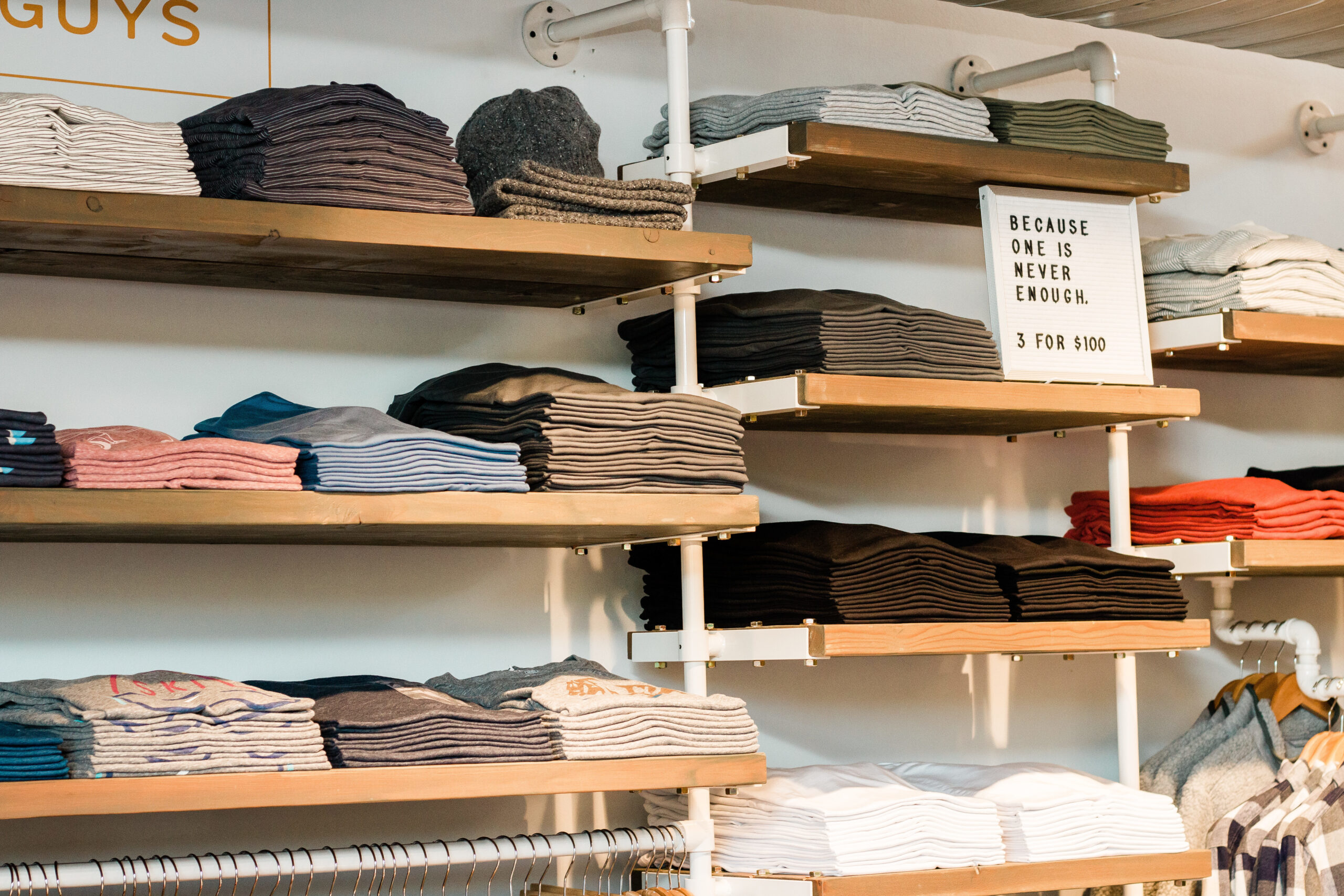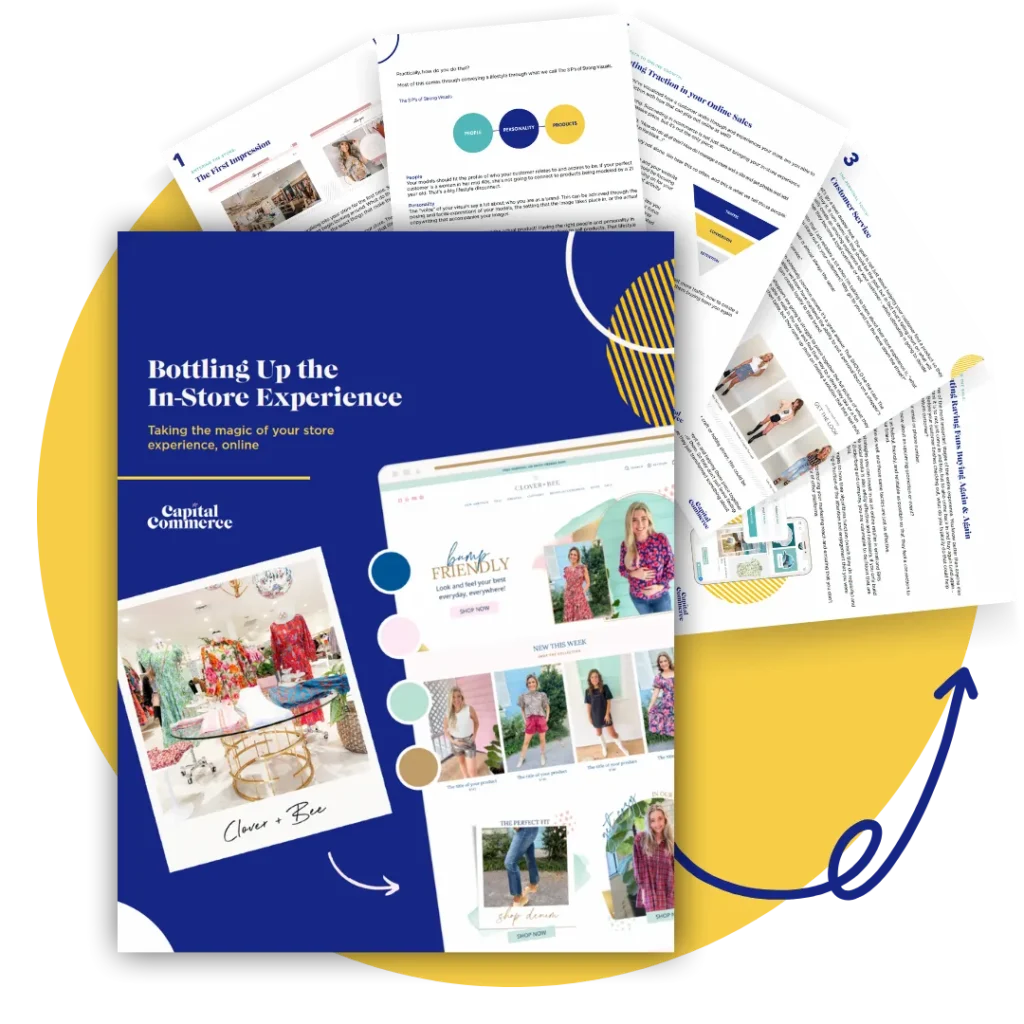A note from Streamline: This post was originally featured on Retail Initiative, a resource for retail entrepreneurs to learn, grow, and be inspired by retail experts and other retailers just like you. Visit www.retailinitiative.com to access exclusive content, live classes, and professional courses for independent retailers serious about scaling up.
If I were to ask you, “what are your strongest competitive advantages?”, what would be your answer?
Do you know, with absolute certainty, what gives your customers a reason to buy from you instead of from your competitor down the road (or more likely…from Amazon)?
Clear communication and execution of your competitive advantages is an often overlooked strategy in the world of independent retail. The businesses that are positioned to thrive and see year-over-year growth know exactly their place in the market. Let’s look at how you can join them.
How Bombas positioned themselves to disrupt the sock market
When Randy Goldberg and David Heath started their eCommerce-based sock company, Bombas, it wasn’t because they were obsessive about socks or had any experience making them. They simply saw an opportunity (a gap) in that particular market.
As of July 2018 (5 years in business), they have sold over 9 million pairs of socks.
The two actually launched Bombas after seeing a post on Facebook that mentioned the constant need for socks at homeless shelters.
So they began their company with the idea to use a one-for-one donation model, where for every pair of socks that is bought by a customer, a pair is donated to a homeless shelter.
As you’ll see from the copy on their website and from PR interviews, this is not the only part of their story that makes them different from Amazon and department stores.
Bombas’ competitive advantages:
- Their product helps solve an important social cause that customers can easily support with their purchase.
- The quality/comfort of the design and fabric are superior to the standard tube sock.
- They offer unique designs and patterns that fit the trends that their target customers want.
- Customer happiness is their number one priority, which is proven out in their customer support, no-questions asked return policy and personal buying experience.
Of course, every market is different. What works for them may not work well at all for you.
With Bombas as a shining example, let’s now talk about how you can identify what your own competitive advantages are.
Identifying Your Competitive Advantages: A Practice in Market Research
Defining what your position in the market is takes time and proper research, and it should by no means be rushed through.
Without knowing what you offer your customers that others don’t (or don’t do as well), you simply won’t have a compelling model to be sustainable over the long-haul. We don’t want that for you.
We’ve already covered in-depth how to do your own competitive research in our article, How to Research Your Market in 2-Hour Coffee Shop Sitting.
What you should be looking for is if you offer any of these benefits to your customers better than your competitors:
- Price – are you able to offer products at a lower cost than competitors? Maybe you have better margins because of owning manufacturing or distribution in-house, or you’ve negotiated lower costs with suppliers, or you can afford to cover shipping costs online.
- Convenience – is there any part of the buying experience that you make easier on your customer than competitors? Are you in more locations to give shoppers convenient access? Are you first in your industry to adopt a seamless omnichannel experience between online and in-store?
- Customer service – is your customer service experience better than competitors? Maybe you offer customer-friendly return and exchange policies or you have experts on staff that can offer professional advice to your shoppers and help them find the product that fits their needs perfectly.
- Product – is there something about your product(s) that is better than your competitors? Perhaps it solves a problem that others in the industry do not. It could have a unique design or material that is attractive to customers. Maybe you’re better at staying ahead of trends than your competition.
- Suppliers – do you offer highly-sought after brands that are difficult to find elsewhere?
- Branding and identity – are you able to serve a group that is underrepresented in your industry? Does your branding connect with that group better than competitors (meaning: are you able to relate with that group’s voice, styles and trends)?
- Social cause – (like Bombas) do you serve a particular cause or mission that customers can be a part of by shopping with you? It’s very important that this is truly at the heart of your company. Customers can smell BS from a mile away if you’re only using a social cause as a marketing ploy.
Creating Your Competitive Advantages: Walking the Walk
Identifying where you can stand out in your market is (obviously) just the beginning. The next step is making sure that you actually execute those advantages.
If you see that you can offer your products at a lower price, then you have to be sure to make good on that promise without dropping to unsustainable margins. This requires looking at every way possible to lower costs (manufacturing and COGS, marketing, overhead, shipping/delivery, etc.).
If customer service is your bread and butter, then you should be allocating resources to train and support your staff so that you are offering a world class customer experience everywhere.
Remember: your competitive advantage is what’s going to keep you in business, so it’s not enough just to claim your positioning and leave it at that. You have to execute and you have to maintain that execution over time; otherwise, your competitors will catch up and take away that advantage.
Communicating Your Competitive Advantages: Make it Known
This part is all about getting the word out on why you are a better option than your competition. It’s not enough just to identify and execute your advantages, because these days, consumers have numerous options at their fingertips. If it’s not Amazon or eBay, then it’s your competitors showing up in Google searches or on their Instagram feeds.
Because of that, your advantages have to be communicated quickly and clearly at every aspect of your marketing.
Be sure to pay especially close attention to the following:
- Website – use the primary real-estate on your site (home page banners, about us page, product and category pages, product descriptions, and featured customer reviews
- Print and digital marketing – this includes any print ads, posts on social media, email marketing, SEO and retargeting ads
- Store design and layout – this is especially important for establishing a consistent message about your positioning. If price is your advantage, use signage around your displays to convey that. If you carry unique products or brands, those displays should be in prominent locations around your store so that they are easily spotted.
Additionally, it’s always insightful to look at what your competitors are trying to communicate to customers. This gives you an idea of what customers are hearing from them so you know better how to stand out. Look at all the same places mentioned above, and even take a look at what Facebook and Instagram ads they are actively running.
* * *
It’s important to remember that companies that are successful at owning and executing their positioning did not get there overnight.
It takes time to figure that out – through experience, failures and lots of feedback from happy and unhappy customers.
Remember, Bombas started simply from the realization that homeless shelters across the country needed more socks. It turned out that there was an intersection at solving that need and catching a trend of socks as a fashion accessory.
The result: rapid customer acquisition and 9 million pairs of socks sold.
So again, if asked you, “what are your strongest competitive advantages?”, what would be your answer?




